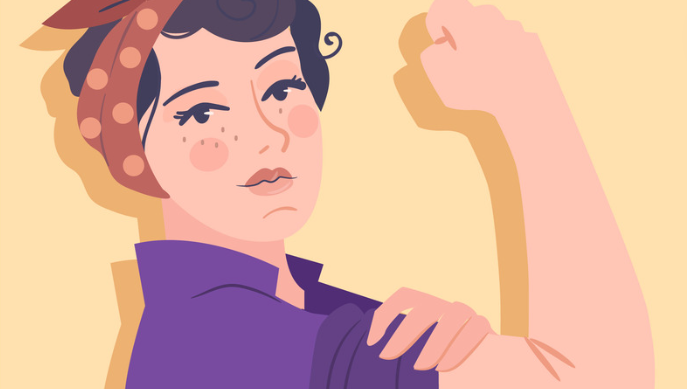What Is International Women’s Day and Why Do We Celebrate It?

© freepik
International Women’s Day is celebrated globally on March 8th every year. It is a day dedicated to honoring the achievements and contributions of women throughout history and across different cultures. But what is the significance of this day and why do we celebrate it nowadays?
What Is International Women’s Day?
International Women’s Day (IWD) is a worldwide observance held every March 8. It highlights key issues in the women’s rights movement, including gender equality, reproductive rights, and combating violence against women. Originating from labor movements in North America and Europe in the early 20th century, IWD was inspired by the universal female suffrage movement.

History of International Women’s Day
International Women’s Day (IWD) has been commemorated since the early 1900s. This was a period marked by significant growth and upheaval in the industrialized world. It was characterized by population surges and the emergence of radical ideologies.
1908: Women’s Unrest and Activism
In 1908, a period of great social upheaval, women’s oppression fueled unrest and activism. In New York City, 15,000 women marched, demanding shorter hours, better pay, and voting rights. This marked a significant moment in the fight for women’s rights.
1909: The Birth of National Woman’s Day
The first National Woman’s Day (NWD) was observed across the United States on February 28. This was followed by a declaration by the Socialist Party of America. This day was dedicated to advocating for women’s rights and continued until 1913, celebrated on the last Sunday of February.
1910: Clara Zetkin’s Proposal
In 1910, at the second International Conference of Working Women in Copenhagen, Clara Zetkin proposed the idea of an International Women’s Day. Moreover, this suggestion, unanimously approved by over 100 women from 17 countries, marked the birth of IWD. It aimed at pressing for women’s demands worldwide.
1911: International Recognition and Tragedy
International Women’s Day was first honored in Austria, Denmark, Germany, and Switzerland on March 19, 1911. Additionally, more than a million people rallied for women’s rights, but tragedy struck with the ‘Triangle Fire’ in New York City, highlighting the dire working conditions faced by women.
1913-1914: Establishment of the Date
Following discussions, February 23 was chosen as the date for International Women’s Day. Translated to March 8 in the widely adopted Gregorian calendar, this day has been globally recognized as IWD since 1914. The period also saw European women rallying against the war and asking for peace.
1917: A Strike for Rights
Russian women began a strike for “Bread and Peace” on February 23, leading to significant political change, including granting women the right to vote. Moreover, this event solidified March 8 as the date for International Women’s Day.

1975: UN Recognition
International Women’s Day was officially recognized by the United Nations in 1975, marking a significant milestone in its global acknowledgment. The General Assembly later proclaimed a UN Day for Women’s Rights and International Peace.
1996: Theme Introduction
The UN introduced annual themes for International Women’s Day, starting with “Celebrating the Past, Planning for the Future” in 1996. Subsequent themes focused on women’s roles in peace, human rights, and violence prevention.
2000: Renewed Focus
By the new millennium, International Women’s Day needed revitalization. With feminism losing popularity, efforts were made to reignite interest and raise awareness about persisting gender disparities and the need for collective action.
2011: Centenary Celebrations
The centenary of International Women’s Day in 2011 saw widespread celebrations and recognition. Governments, organizations, and individuals marked the occasion, showing women’s achievements and asking for continued progress.
2024: Continuing the Fight
Despite significant advancements, challenges such as pay inequality and violence against women persist globally. International Women’s Day remains a vital platform for advocacy and action, with diverse activities worldwide driving conversations for gender equality.
Why Is International Women’s Day Important?
In the past year, women in several countries, including Afghanistan, Iran, Ukraine, and the US, have been actively advocating for their rights amidst hard circumstances.
For example, in Afghanistan, the resurgence of the Taliban has led to setbacks in human rights, with women and girls facing restrictions such as bans on higher education, limited job opportunities, and strict dress codes. Moreover, in Iran, protests erupted following the death of Mahsa Amini, highlighting discontent with the country’s strict rules on women’s attire. Demonstrators, both male and female, have been demanding better rights for women and political change, facing harsh crackdowns from authorities.
The invasion of Ukraine by Russian forces has shown gender disparities, leading to large food insecurity, poverty, and gender-based violence, according to reports by the UN. Additionally, in the US, the Supreme Court’s overturning of Roe v Wade, a landmark decision protecting abortion rights, has sparked widespread outrage and protests. Some American women have sought abortion support in Mexico, where abortion was effectively decriminalized in 2021, showcasing the cross-border impact of legal changes on women’s reproductive rights.
How Is International Women’s Day Celebrated?
International Women’s Day is seen as a national holiday in numerous countries worldwide, each with its unique customs and traditions.
In Russia, the holiday holds significant cultural importance, with flower sales doubling in the days near March 8th. It’s a time when gestures of appreciation are extended to women, often through the exchange of flowers. China acknowledges International Women’s Day by granting many women a half-day off work, as advised by the State Council, recognizing the contributions and significance of women in society.

Moreover, in Italy, the celebration of International Women’s Day, known as la Festa della Donna, includes the giving of mimosa blossoms. Although the origin of this tradition is not entirely clear, it is believed to have emerged in Rome following World War II as a symbol of appreciation and solidarity. Additionally, in the United States, the entire month of March is named Women’s History Month. Each year, a presidential proclamation is issued to honor the achievements and contributions of American women throughout history, highlighting their invaluable role in shaping the nation’s progress and identity.
Is There Also an International Men’s Day?
International Men’s Day is observed on November 19th, although it has only been formally recognized since the 1990s and is not acknowledged by the UN. Celebrated in over 80 countries, including the UK, the day aims to recognize the positive contributions men make to the world, their families, and communities. Moreover, organizers emphasize the celebration of positive role models, raising awareness of men’s well-being, and fostering better gender relations.
How do you or your country celebrate International Women’s Day?
You might also want to read: The Entire History of Valentine’s Day


